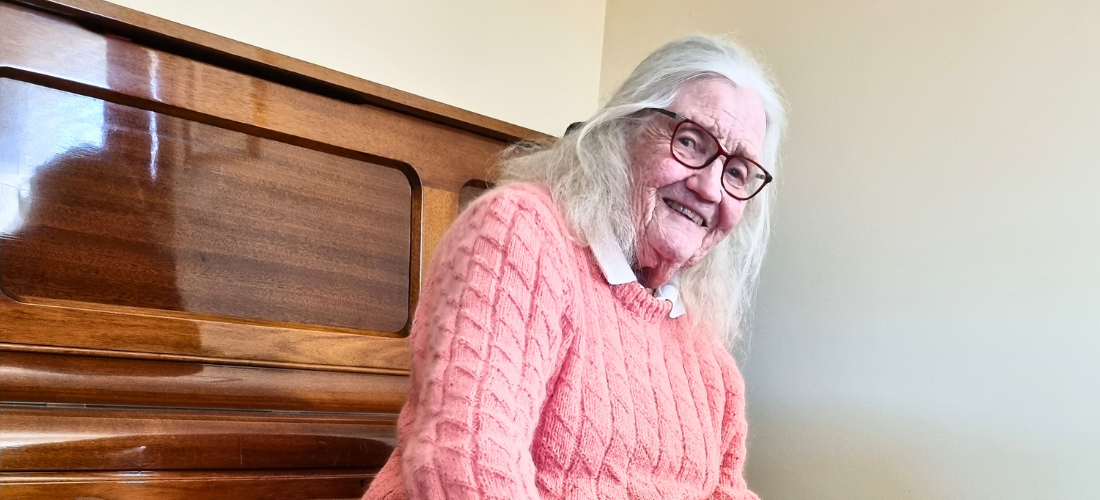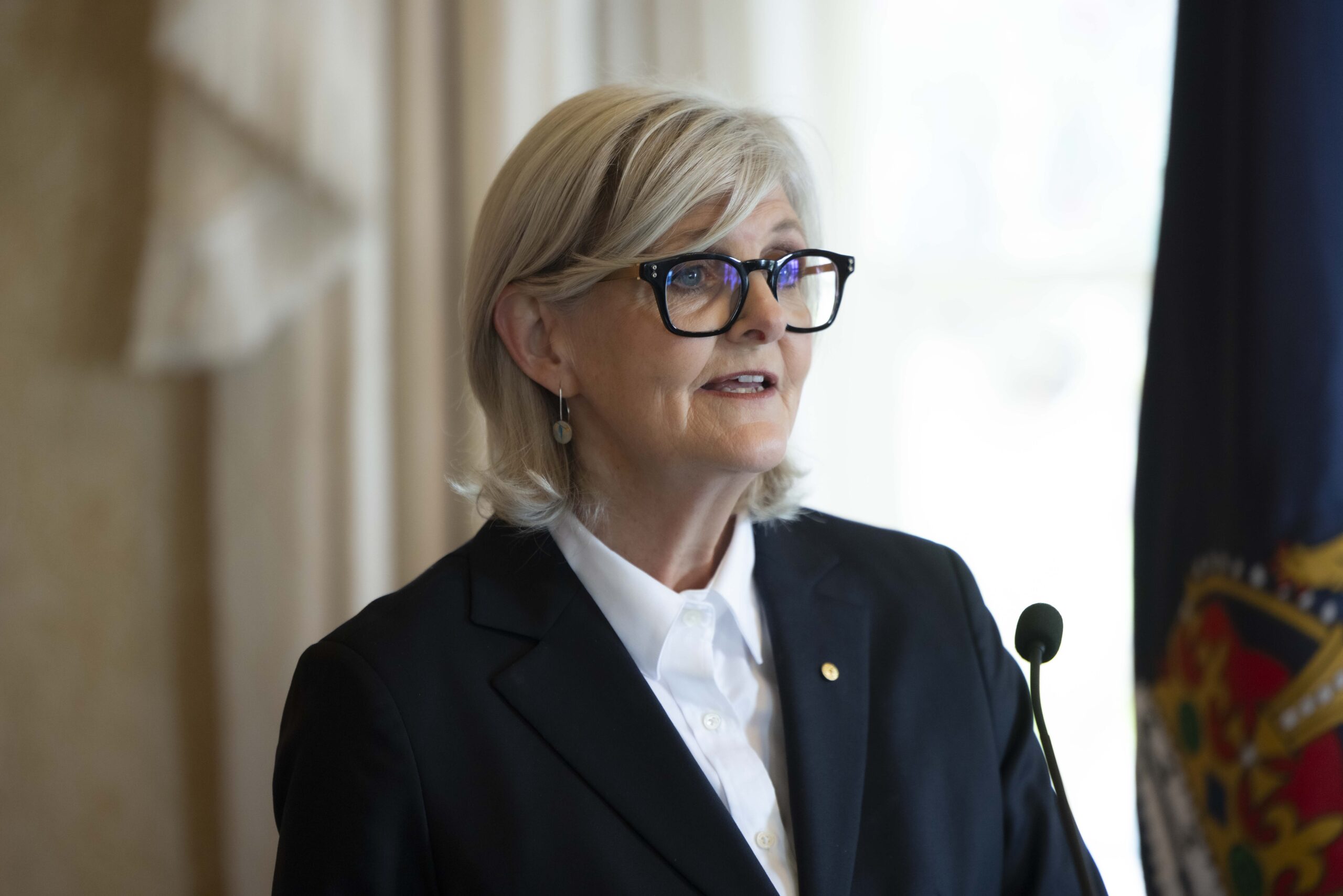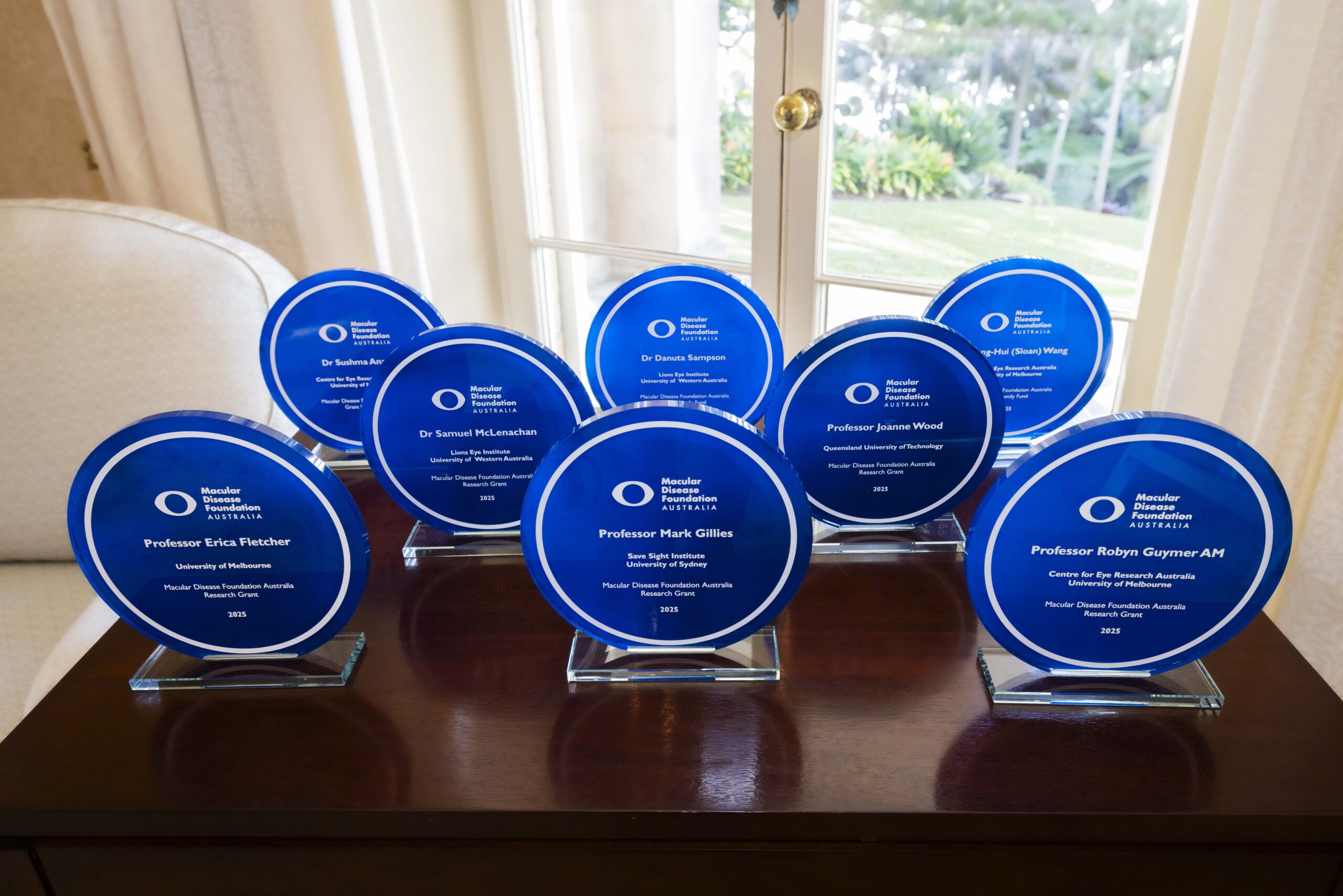Melbourne’s Valerie Edwards was one of the first patients in Australia to benefit from eye injections 15 years ago.
Now, Valerie is glad our political leaders have rejected an independent recommendation to cut the Medicare rebate for this sight-saving treatment.
When Valerie Edwards noticed a bend in her sewing needle, she immediately saw her retinal specialist to ask what was wrong with her eyes.
That day, Valerie’s ophthalmologist diagnosed her with neovascular age-related macular degeneration (wet AMD) in her left eye.
Valerie, 86, can still remember that conversation 18 years ago.
“First of all he said to me, ‘You’re going to lose your central vision’ – that was the shock of it all”, Valerie recalls.
“Then he said there’s good news and bad news. The bad news is you’ve got macular degeneration. The good news is you’ve got the wet form, which can be treated.
“I’m lucky there was something available, because before that, there was nothing.”
Valerie received laser treatment for a couple of years, until eye injections became available in Australia in 2007.
A treatment breakthrough
Valerie was one of the first Aussie patients to benefit from this major breakthrough, which has saved the sight in her left eye for the past 15 years, despite a few scars from that early laser therapy.
Fifteen years after this sight-saving treatment arrived down under, Australia is a world leader in the treatment of wet AMD.
A 2020 study of people like Valerie who’d completed 10 years of continuous treatment found that the average Australian patient maintained eyesight as good as when they started a decade earlier.1
Early action saves sight
Catching symptoms early, starting injections immediately and maintaining regular treatment are the keys to success.
“It’s really been amazing, it’s stopped the decline,” Valerie says.
“I sew, I read, I drive … I consider myself extremely lucky. I was fortunate I caught it so early.”
“If I hadn’t been a sewer, I may not have picked it up, because your good eye takes over. I’ve got friends who didn’t pick it up early. And of course, there’s nothing much they can do about that eye.”
During one of her appointments late last year, a scan picked up wet AMD in her good eye before she even noticed any symptoms. Now Valerie needs injections in both eyes to preserve her vision.
Out-of-pocket costs
Valerie sees her ophthalmologist for her injections every four to six weeks. She used to be out of pocket $570 every time, but now her health fund picks up the bill.
“Prior to that, the cost was exorbitant – but, you know, what’s the alternative?” Valerie asks.
“If you drop out of treatment, you lose your central vision altogether, so it never occurred to me to do so.”
Sadly, for many patients, the cost and burden of treatment forces many patients to stop or delay their injections and risk irreversible blindness.
Proposed Medicare cut
The average patient’s out-of-pocket costs total $1900 a year – double for those like Valerie who need injections in both eyes.
Alarmingly, a recommendation by the independent Medicare Benefits Schedule (MBS) Review Taskforce for Ophthalmology to cut the Medicare rebate for sight-saving eye injections threatened to make treatment even more expensive.
Economic modelling commissioned by MDFA estimated that the proposed 69 per cent cut would more than double patients’ average out-of-pocket costs – and the extra financial burden would have resulted in an additional 47,000 Australians experiencing permanent vision loss or blindness in the next five years.
Major victory for the macular disease community
But after MDFA advocated against the cut, both major political parties committed to rejecting the cut regardless of who formed Government after this year’s Federal Election.
This is a major victory for the macular disease community, and Valerie was happy to hear the good news.
“Oh good, the alternative would have been devastating for so many people.”
“I think it should never have been considered in the first place. I imagine many would have ended up going through the public system and having to wait longer to get their treatment.
“I would have hoped they would have made the treatment even more affordable. It’s terribly expensive and we’re talking about people’s sight.”
Valerie hopes that as many Australians as possible can continue to benefit from the treatment that has maintained her vision for the past 15 years.
“I can’t believe it’s been so long, but it’s just happened,” Valerie says.
“I’m very independent, I do everything just as I’ve always done … and I’m just grateful that I’ve got the vision I’ve got. Things are a little bit distorted, but I can still see okay. And that’s 17 years. That’s a long time. And so I’m only grateful that the treatment has worked as well as it has.”
Reference
1. Gillies et al, Am J Ophthalmol 2020;210 116-124. doi_10.1016_j.ajo.2019.10.007
Posted: 18 May 2022

















